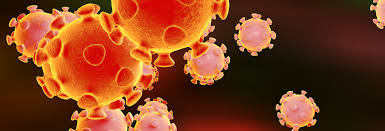
This new coronavirus strand was detected in Wuhan, China, last December and so far there are more than 900,000 cases
reported worldwide due to the virus and more than 50,000 deaths.
As the outbreak multiplies, it changes the lives of millions of people on the planet, who from one moment to another must stay at home and avoid socialization.
The name of the coronavirus
Although it may seem irrelevant, mistakes are made when using the same name for the virus and for the disease it produces, when each one has its own name. Let’s see:
1-Coronavirus
This word refers to a whole family of viruses, which are so
named because their membranes have crown-shaped tips.
This family of viruses has been known for quite a while.
The 2013 “Case for the Origin of Coronaviruses” study,
published in the Journal of Virology, says that the most recent
the common ancestor of these viruses is around 10,000 years old,
but the earliest versions of coronaviruses likely have existed for
millions of years.
Coronaviruses, which live in bats and birds, are innumerable,
but only seven of them, until 2020, have been identified as
causing disease in humans. They are called HCoSV (Human
Coronavirus). Four of them (HCoV-229E, HCoV-NL63,
HCoV-HKU1, and HCoV-OC43), usually cause a common
cold, but can have very serious outcomes in immunosuppressed
people.
The other three types of coronavirus that have caused outbreaks
of serious human diseases are SARS-CoV-1 (2003-2003),
MERS-CoV (2012-present), and now SARS-CoV-2, which is
unknown for how long it will be present.

2-SARS-CoV-2
This is the official name that the International Committee on
Taxonomy of Viruses (ICTV) gave in February to the last
member of the family of coronaviruses and that is causing fear
throughout the world.
The name comes from “coronavirus 2” (Cov-2) and the
acronym in English for Acute and Severe Respiratory
Syndrome (SARS). ICTV chose this name due to the genetic
similarity between SARS-CoV-2 and SARS-CoV-1, the virus
that caused the SARS outbreak in 2003, a disease that infected
more than 8,000 people and killed about 800.
However, the World Health Organization (WHO) prefers to
refer to the pathogen as “the virus responsible for COVID-19”
to prevent some populations from associating it with SARS,
which had a higher mortality rate.

Covid-19
This is the official name that the WHO gave in February to the
an infectious disease caused by the new coronavirus, that is, by
SARS-CoV-2. The name comes from the English phrase
“coronavirus disease of 2019” (coronavirus disease of 2019)
In general, viruses and the diseases they produce often have
different names, the WHO explains. One of the best-known
examples is that of the human immunodeficiency virus (HIV),
which is the cause of acquired immunodeficiency syndrome
(AIDS).
It is important to differentiate the virus from the disease, since
not everyone who carries HIV develops AIDS, so the two
names cannot be used interchangeably.
Despite the similar names of viruses (SARS-CoV-1 and SARS-
Cov-2), the WHO says that the diseases they cause, COVID-19
and SARS, are quite different. SARS has had a higher mortality
rate, but its propagation power (infection capability) was much
lower than that of COVID-19. There have been no SARS
outbreaks since 2003.
Given the reality of the COVID-19, the only thing we can do to
help prevent its continued spread is to comply with the
recommendations set by the health authorities. “Let us join
forces and be aware of reality, let us be part of the
solution.”

